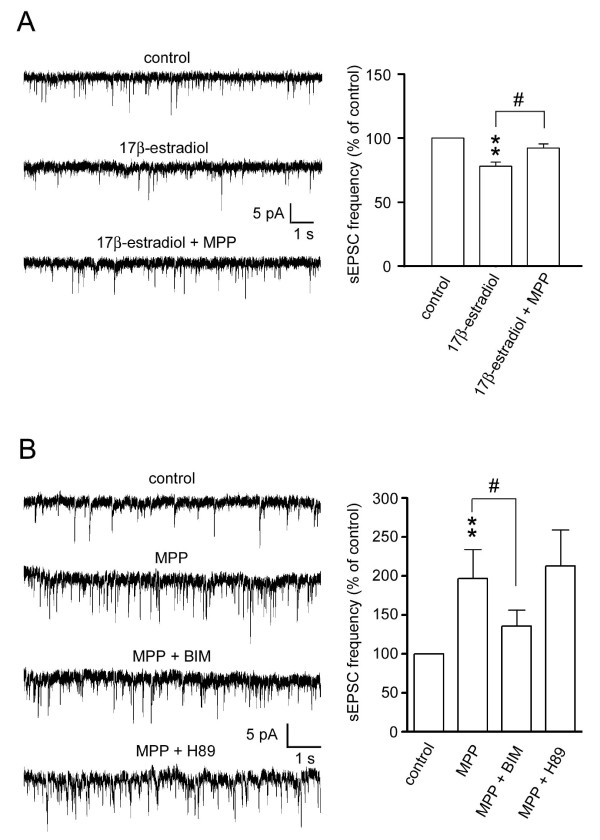Figure 3.
Exogenous estrogen-induced reduction of sEPSC frequency and the involvement of PKC in MPP-induced increase of sEPSC frequency. (A) Traces of sEPSCs before the treatment (control), during the treatment with 17β-estradiol (1 μM), and during the treatment with 17β-estradiol (1 μM) plus MPP (10 μM) are shown. Quantitative analysis shows that estrogen reduces sEPSC frequency, and MPP reversed the estrogen-induced inhibition (n = 6). (B) Traces of sEPSCs before the treatment (control), during the MPP treatment (10 μM), during the treatment with MPP (10 μM) plus BIM (1 μM), and during the treatment with MPP (10 μM) plus H89 (5 μM) are shown. Quantitative analysis shows that BIM, but not H89, inhibits MPP-induced increase in sEPSC frequency (n = 5). ** P < 0.01, # P < 0.05 (paired t-test).

